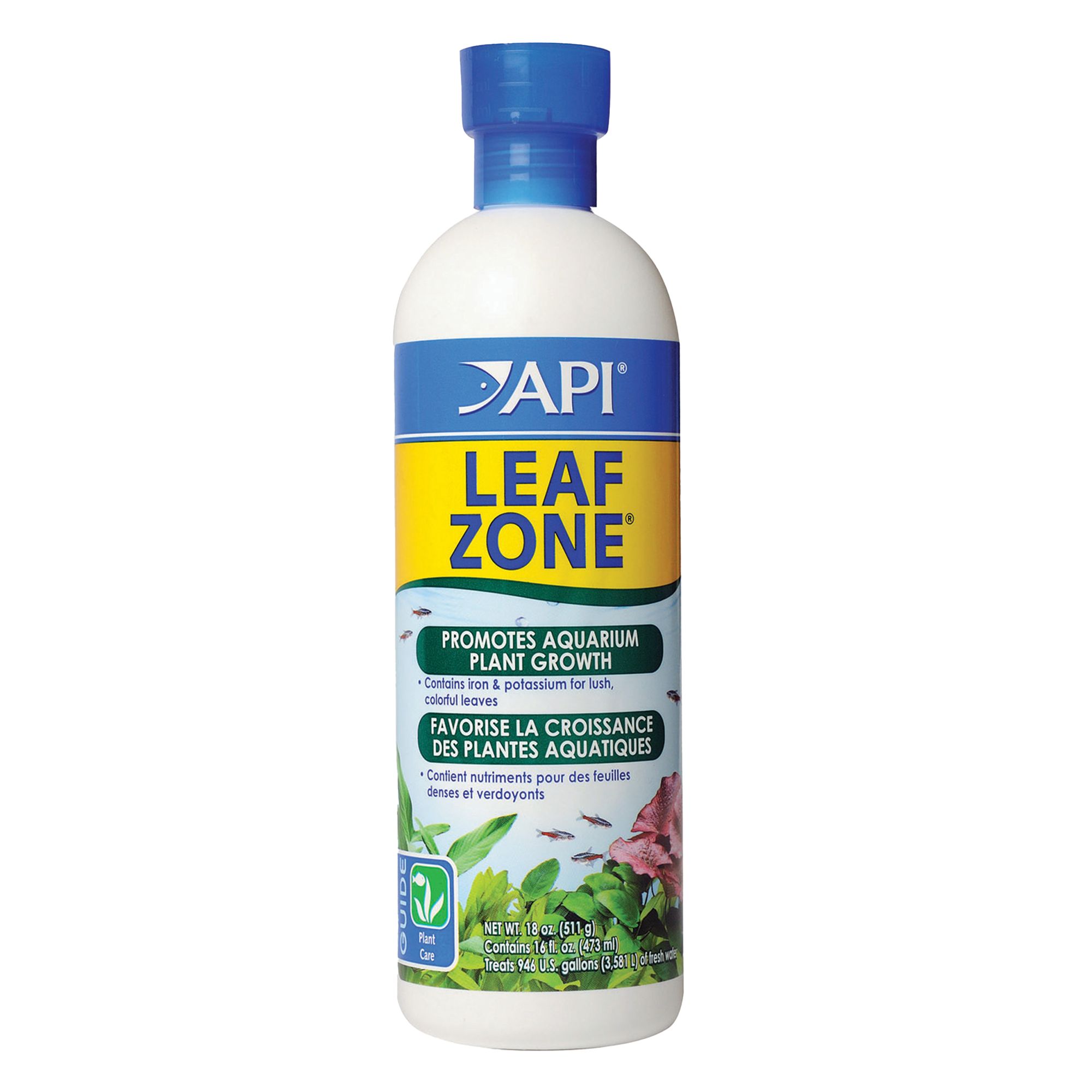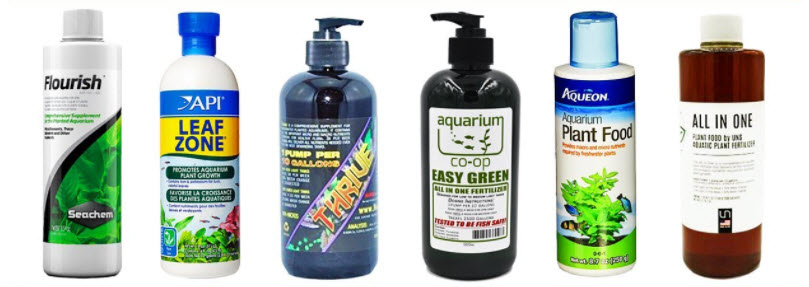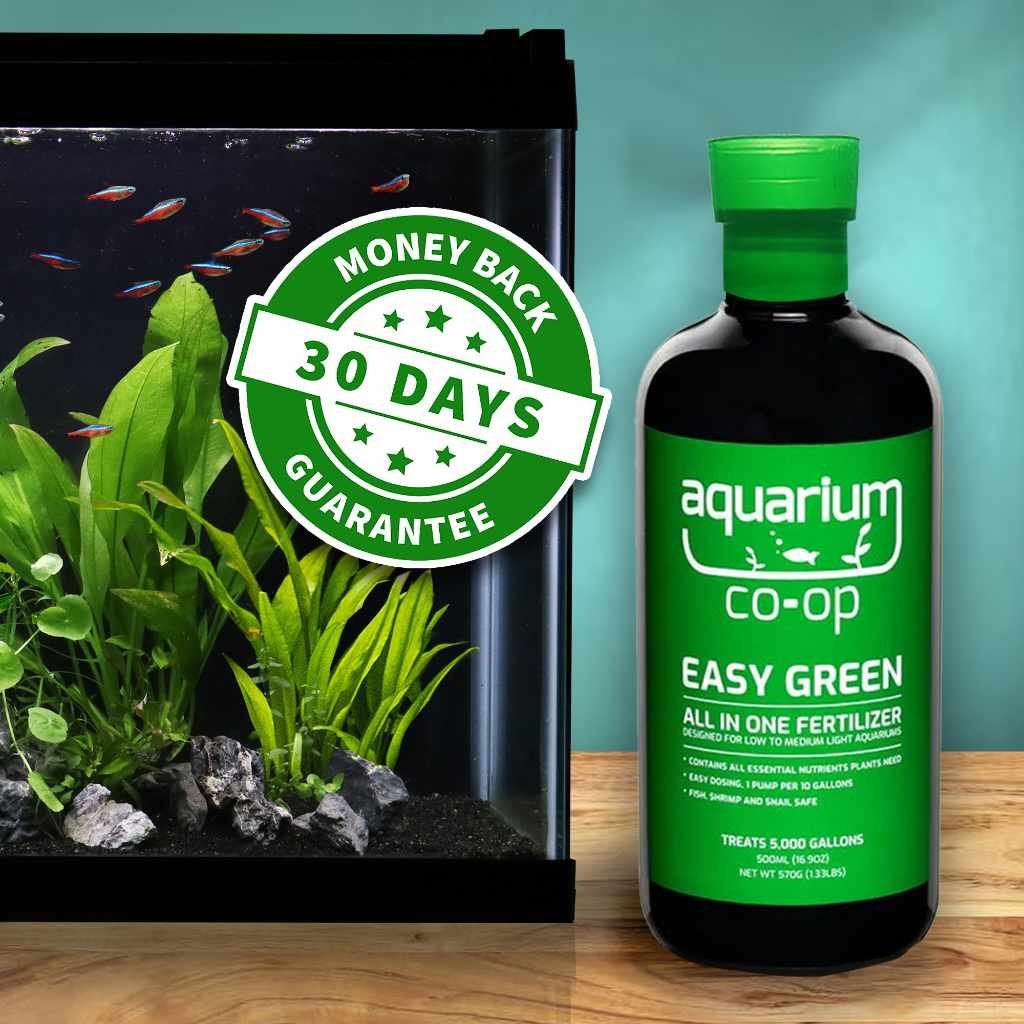Aquarium plant fertilizer is key for thriving underwater gardens. It nourishes plants, ensuring they grow healthy and vibrant.
In the world of aquariums, plant health is crucial. Proper fertilizer boosts plant growth and maintains water quality. This guide explores why plant fertilizers are essential. Healthy plants need nutrients to flourish. Fertilizers provide these nutrients, supporting lush greenery and balanced ecosystems.
Without them, plants may struggle, affecting the entire aquarium. Using the right fertilizer can transform your aquarium. It brings life and color, creating a beautiful underwater scene. Whether you are a beginner or an expert, understanding plant fertilizer is vital. Dive into this guide and learn how to enhance your aquatic plants. Discover the secrets to a thriving aquarium.

Credit: www.petsmart.com
Introduction To Aquarium Plant Fertilizers
Maintaining a thriving aquarium is not just about keeping fish; it’s also about nurturing the aquatic plants that create a balanced ecosystem. Aquarium plant fertilizers are essential tools that help you achieve this. They provide the nutrients your plants need to grow lush and vibrant. As someone who once struggled with yellowing leaves and stunted growth, I can tell you that choosing the right fertilizer can transform your aquarium into a flourishing underwater garden.
Importance Of Fertilizers
Why do your plants need fertilizers? Aquatic plants require specific nutrients to thrive, like nitrogen, phosphorus, and potassium. These nutrients might not be sufficiently available in your aquarium water, especially if it’s heavily filtered. Fertilizers ensure that plants get the right mix to support healthy growth.
A lack of nutrients can lead to weak, discolored plants. You might have noticed this in your own tank. Adding fertilizers can prevent this, ensuring your plants are not just surviving but thriving.
Natural Growth Benefits
Using aquarium fertilizers can enhance natural growth benefits that plants offer. They help improve water quality by absorbing excess nutrients and producing oxygen. Healthier plants mean a healthier environment for your fish.
Fertilizers can also boost the natural aesthetic of your aquarium. Imagine your tank filled with lush green plants swaying gently. It adds a sense of tranquility that only well-nourished plants can provide.
Have you considered the long-term benefits of using fertilizers? Strong plants can outcompete algae, reducing the need for constant cleaning. This means more time enjoying your aquarium and less time maintaining it.
Choosing the right fertilizer is crucial. Think about your specific needs. Are your plants struggling? What results are you hoping to achieve? By answering these questions, you can select a fertilizer that caters to your aquarium’s unique requirements.
Types Of Aquarium Plant Fertilizers
Aquarium plant fertilizers come in liquid, powder, and tablet forms, providing essential nutrients for healthy plant growth. Liquid fertilizers are easy to use, while powder options offer customizable nutrient mixes. Tablets dissolve slowly, releasing nutrients over time, perfect for rooted plants.
Aquarium plant fertilizers are essential for keeping your aquatic plants healthy and vibrant. Just like plants in your garden, aquatic plants need nutrients to thrive. Different types of fertilizers cater to the varied needs of these underwater beauties. Understanding the types can help you choose the right one for your aquarium.Liquid Fertilizers
Liquid fertilizers are a popular choice among aquarists because of their ease of use. They dissolve quickly in water, providing immediate nutrients to your plants. You simply add them to your tank at regular intervals, usually once a week. Liquid fertilizers typically contain essential nutrients like nitrogen, phosphorus, and potassium. These are crucial for plant growth. If you’ve ever noticed your plants looking a bit pale or yellow, a liquid fertilizer might be just what they need. However, be cautious not to over-fertilize. This can lead to algae blooms, which can be a nuisance. Always follow the recommended dosage on the label. If you’re new to using liquid fertilizers, start with a small amount and observe your plants.Root Tabs
Root tabs are another type of fertilizer that can be very beneficial, especially for rooted plants. These are small, solid tablets that you place into the substrate near the plant roots. Root tabs release nutrients slowly, providing a steady supply over time. They are perfect for plants that feed primarily through their roots. If your aquarium has plants like Amazon swords or crypts, root tabs can be a game-changer. They deliver essential nutrients directly to the roots, fostering robust growth. Using root tabs can also help prevent nutrient depletion in your substrate. This can be crucial for the long-term health of your plants. Consider using root tabs in conjunction with liquid fertilizers for a balanced nutrient approach. Have you tried both liquid fertilizers and root tabs? Which worked best for you? Share your experiences and see how others are nurturing their aquatic plants.Key Nutrients For Plant Growth
Aquarium plant fertilizers supply key nutrients like nitrogen, phosphorus, and potassium. These elements help plants grow strong and vibrant. Balanced nutrients ensure healthy roots and lush foliage in aquatic environments.
Aquarium Plant Fertilizer is essential for maintaining a vibrant and thriving underwater garden. Just like any other plant, aquarium flora requires specific nutrients to grow and flourish. The key to successful plant growth lies in understanding the balance of nutrients needed. This not only keeps your plants healthy but also enhances the overall beauty of your aquarium. Let’s dive into the key nutrients that are crucial for plant growth, focusing on macronutrients and micronutrients.Macronutrients
Macronutrients are the primary building blocks for your aquarium plants. They are needed in larger quantities. The main macronutrients include nitrogen, phosphorus, and potassium. – Nitrogen is vital for leaf growth and gives your plants their lush, green appearance. Without enough nitrogen, your plants may turn yellow and struggle to grow. – Phosphorus supports root development and flowering. It’s crucial for energy transfer within the plant. A deficiency can lead to poor root growth and weak stems. – Potassium helps in overall plant health, improving disease resistance and photosynthesis. It ensures your plants have strong structures and vibrant colors. Have you checked your fertilizer for these macronutrients? Ensuring your plants get the right amount can make a noticeable difference.Micronutrients
Micronutrients, though required in smaller amounts, are equally important. They include iron, magnesium, calcium, and trace elements like boron, copper, and zinc. – Iron is essential for chlorophyll production, making it crucial for photosynthesis. Iron deficiency can cause leaves to turn pale or yellow. – Magnesium plays a role in enzyme activation and is part of the chlorophyll molecule. Lack of magnesium can lead to interveinal chlorosis, where leaves turn yellow while veins remain green. – Calcium aids in cell wall structure and growth regulation. It helps plants withstand stress and maintain firmness. Without enough calcium, plant tips may die off. Imagine having a beautifully balanced aquarium where plants flourish, adding life to your underwater world. Are your plants getting the micronutrients they need? Adjusting your fertilizer can lead to healthier, more resilient plants. Remember, the secret to a thriving aquarium lies in understanding and providing the right nutrients. Experiment with different fertilizers and observe your plant’s response. This active engagement will help you learn and achieve the beautiful aquarium garden you’ve always wanted.Choosing The Right Fertilizer
Selecting the right aquarium plant fertilizer ensures healthy and vibrant plants. Consider nutrients like nitrogen, phosphorus, and potassium. These elements support growth and color. Check for liquid or tablet forms suitable for your tank. Proper dosing is essential for preventing algae and promoting plant health.
Choosing the right aquarium plant fertilizer is like finding the perfect recipe for a thriving underwater garden. With so many options available, how do you ensure your plants get the nutrients they need without overwhelming them? Picking the right fertilizer is crucial for maintaining a healthy balance in your aquatic environment. Let’s dive into the essential factors you need to consider before making your choice.Factors To Consider
When selecting a fertilizer, think about the specific needs of your aquarium plants. Are your plants showing signs of nutrient deficiency, such as yellowing leaves or stunted growth? Different fertilizers offer varying nutrient compositions. Consider the size of your aquarium as well. A small tank might not require the same amount of fertilizer as a larger setup. It’s all about finding the right dose that doesn’t disrupt the delicate balance of your aquarium ecosystem. Cost is another factor. While you might be tempted to go for the cheapest option, investing in a quality fertilizer can pay off in the long run with healthier, more vibrant plants.Compatibility With Plant Species
Not all fertilizers are created equal, and not all are suitable for every plant species. Some plants, like Java ferns or Anubias, require fewer nutrients compared to fast-growing species like Amazon swords or water wisteria. Have you ever noticed how some plants thrive in your aquarium while others struggle? This could be due to the compatibility of your fertilizer with the plant species you have. Research the specific needs of your plants. Do they prefer a nutrient-rich substrate, or are they mainly drawing nutrients from the water column? Understanding this can help you choose a fertilizer that complements your plants’ natural growth habits. Remember, the right fertilizer can enhance your plants’ color and growth, making your aquarium a vibrant and engaging part of your home. Are you ready to see your aquatic garden flourish?Application Techniques
Efficiently applying aquarium plant fertilizer involves careful dosing. Distribute the fertilizer evenly across the water surface. Use a syringe for precise measurement and injection near plant roots.
Aquarium plant fertilizers are vital for keeping your aquatic plants lush and vibrant. They provide essential nutrients that plants need to thrive. However, knowing how to apply them correctly can make all the difference in their effectiveness. Let’s dive into some practical techniques to help you get the most out of your aquarium plant fertilizer.Dosing Guidelines
Proper dosing is crucial for maintaining a balanced aquarium ecosystem. Start by reading the label on your chosen fertilizer. It usually indicates the recommended amount based on your tank size. For smaller tanks, use a syringe or pipette for precision. This prevents over-fertilizing, which can lead to algae growth. If you have a larger tank, a measuring cup can help you apply the correct amount. Consider your plant density and type. Heavily planted tanks may require more nutrients. Adjust your dosage accordingly, but always start with the lower end of the recommended range.Frequency Of Use
How often you use fertilizer can impact your plant health. Some aquariums benefit from daily dosing, especially those with high light and CO2 levels. Weekly dosing might be more suitable for tanks with slower-growing plants. Keep an eye on plant growth and algae levels as indicators. Remember, your plants’ needs can change over time. Regularly assess their growth and adjust your fertilizing schedule as needed. Have you ever noticed your plants looking a bit pale or stunted? This could be a sign that your dosing frequency needs tweaking. By paying attention to these details, you can ensure your plants get the nutrients they need to flourish. How do you gauge the right amount of fertilizer for your aquatic garden? Share your thoughts and experiences in the comments!Diy Natural Fertilizer Options
Aquarium plant fertilizer can be created using simple household items. Crushed eggshells provide calcium, while banana peels offer potassium. Coffee grounds add nitrogen, supporting plant growth naturally.
Aquarium enthusiasts often find themselves pondering the best ways to nurture their aquatic plants without resorting to synthetic fertilizers. DIY natural fertilizer options provide a sustainable and cost-effective alternative, allowing you to maintain a healthy and thriving underwater garden. By using ingredients readily available at home, you can ensure your plants receive the nutrients they need while keeping your ecosystem eco-friendly.Homemade Recipes
Creating your own aquarium plant fertilizer can be surprisingly simple. One popular recipe involves using banana peels. Start by cutting the peels into small pieces and boiling them. Once cooled, strain the liquid into a container. This potassium-rich solution can be a great addition to your aquarium. Another method is to use eggshells. Crush the eggshells and boil them. Allow the mixture to cool before straining. The calcium from eggshells helps in strengthening plant structures. You can use the liquid to water your plants directly or mix it with the aquarium water.Eco-friendly Ingredients
Choosing eco-friendly ingredients not only benefits your aquarium but also promotes sustainability. Coffee grounds are an excellent choice. They are rich in nitrogen, which boosts plant growth. Sprinkle them sparingly in the substrate to avoid over-acidifying the water. You might also consider using green tea. Steep a tea bag in hot water, let it cool, and then pour the tea into the aquarium. The antioxidants in green tea can help prevent algae growth while providing nutrients. Have you ever tried using seaweed? It’s a fantastic source of trace elements. Simply soak dried seaweed in water overnight. Use the infusion to nourish your plants, giving them a natural boost. Are there other ingredients lying around your home that might benefit your aquarium plants? What unexpected items could be turned into eco-friendly plant food? By experimenting with these options, you might discover a unique solution that works perfectly for your aquatic garden.Common Problems And Solutions
Aquarium plants often struggle with nutrient deficiencies. A balanced fertilizer can ensure healthy growth and vibrant colors. Regularly check and adjust the nutrient levels for optimal plant health.
Aquarium plants add beauty and balance to your aquatic environment. However, maintaining their health can be challenging. Common issues like over-fertilization and nutrient deficiencies often arise. Understanding these problems and how to tackle them can make your aquarium flourish. Let’s dive into some practical solutions. ###Over-fertilization Issues
Adding too much fertilizer to your aquarium can harm plants and fish. You might notice algae blooms or plants turning yellow. Have you ever added a new fertilizer and found your tank overwhelmed with algae? This is often due to over-fertilization. To solve this, start by reducing the amount of fertilizer. Measure the dosage carefully. Observe your tank for a week or two after adjusting. Regular water changes can help dilute excess nutrients. Keep a log of what you add and how your plants react. ###Nutrient Deficiencies
Plants need a balanced diet just like we do. A lack of essential nutrients can cause plants to wilt or change color. You may see holes in the leaves or stunted growth. Have you ever wondered why your plants aren’t thriving despite your efforts? Identify which nutrient is missing. For instance, yellowing leaves might indicate a nitrogen deficiency. Once identified, choose a fertilizer that provides the missing nutrients. Consider using root tabs or liquid fertilizers for direct application. Regularly monitor plant health to adjust your approach. Addressing these common problems with practical solutions can transform your aquarium into a vibrant underwater garden. What changes will you make to enhance the health of your aquatic plants today?
Credit: www.aquariumcoop.com
Benefits Of Natural Fertilizers
Natural fertilizers offer several benefits for aquarium plants. They promote a balanced ecosystem without harsh chemicals. Using natural options supports plant growth and health. This enhances the beauty of your aquarium, making it more vibrant and lively.
Sustainability
Natural fertilizers are eco-friendly. They reduce chemical runoff into water bodies. This ensures a safer environment for aquatic life. Sustainable choices support long-term aquarium health. They help maintain water quality and plant vitality.
Enhanced Plant Health
Natural fertilizers provide essential nutrients. These nutrients are crucial for plant growth. Healthier plants resist diseases and pests better. They also grow more robustly and vibrantly. This creates a thriving aquatic environment.

Credit: aquariumscience.org
Frequently Asked Questions
What Is The Best Fertilizer For Planted Aquarium Plants?
Liquid fertilizers with balanced nutrients are best for planted aquariums. Ensure they contain nitrogen, phosphorus, and potassium. Look for options specifically designed for aquarium plants to promote healthy growth. Brands like Seachem Flourish and API Leaf Zone are popular choices among aquarists.
Do I Need Fertilizer In A Planted Aquarium?
Yes, fertilizer is essential for a planted aquarium. It provides nutrients necessary for plant growth and health. Regular dosing prevents nutrient deficiencies, ensuring vibrant and thriving aquatic plants. Always choose fertilizers compatible with your aquarium’s ecosystem to maintain balance and prevent algae overgrowth.
Do I Need To Feed The Plants In My Fish Tank?
Yes, feeding aquarium plants is essential. Use liquid fertilizers or root tabs for healthy growth. Plants absorb nutrients from these supplements, promoting vibrant foliage and better oxygenation for fish. Regular feeding helps prevent nutrient deficiencies and supports a balanced ecosystem.
Ensure you follow instructions for the best results.
What Aquarium Plant Fertilizer Is Safe For Snails?
Use aquarium plant fertilizers free of copper and other harmful metals. Opt for products labeled safe for invertebrates. Seachem Flourish and API Leaf Zone are popular choices that ensure snail safety. Always read labels to confirm compatibility with snails. Regular monitoring helps maintain a healthy environment for all aquatic life.
Conclusion
Aquarium plant fertilizers boost plant health. They provide nutrients plants need. Strong plants help create balanced ecosystems. Healthy plants improve water quality. They also enhance the beauty of aquariums. Choosing the right fertilizer is important. Consider your plant types and tank conditions.
Test water regularly to ensure balanced nutrients. Monitor plant growth and adjust fertilizer if needed. A thriving aquarium is a joy to observe. It makes aquatic life vibrant and lively. Proper care and attention are key. Your plants will thank you with lush, green leaves.
Enjoy a flourishing aquatic environment.





